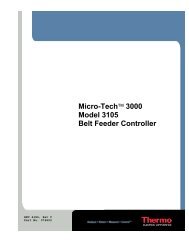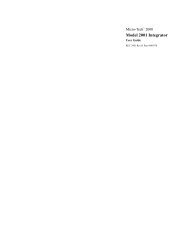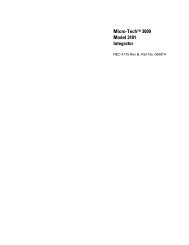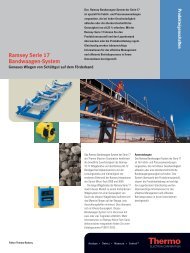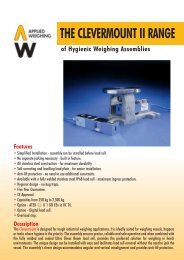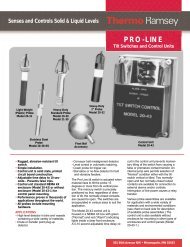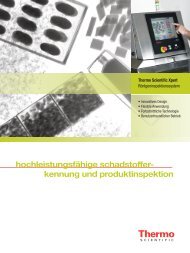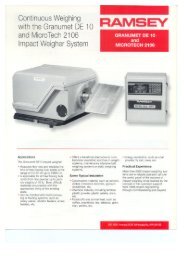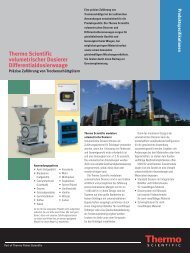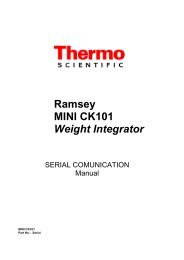PROFIBUS-DP Slave Protocol Manual Ramsey Micro-Tech™ 3000 ...
PROFIBUS-DP Slave Protocol Manual Ramsey Micro-Tech™ 3000 ...
PROFIBUS-DP Slave Protocol Manual Ramsey Micro-Tech™ 3000 ...
You also want an ePaper? Increase the reach of your titles
YUMPU automatically turns print PDFs into web optimized ePapers that Google loves.
Profibus-<strong>DP</strong> Model 3102<br />
Appendix A<br />
Floating Point Notation<br />
<strong>Micro</strong>-Tech <strong>3000</strong> stores floating point data types using the IEEE single precision format. The format<br />
contains a sign bit, an exponent field and a fraction field or mantissa.<br />
The represent value<br />
The value of the number being represented is equal to the exponent multiplied by the fractional part<br />
with the sign specified by the bit sign field :<br />
(-1) * (1.0+fraction) * s<br />
For detailed information, refer to the ANSI IEEE Standard for Binary Floating Point Arithmetic.<br />
Sign Bit<br />
The sign of the number being represented is stored in the sign bit. If the number is positive, the sign<br />
bit contains the value 0. If it is negative, it contains the value 1. The sign bit is stored in the most<br />
significant bit of a floating point value.<br />
Exponent Field<br />
Using an exponent increases the range of rapresentable numbers. The exponent field of the number<br />
contains a ‘biased’ form of the exponent. A bias is subtracted from the exponent field, letting the<br />
actual exponent represent both positive and negative exponents. The value of this bias is<br />
hexadecimal 7F; therefore, the effective exponent (Rexp) of the number can be optained as:<br />
Rexp = Exp – 7F<br />
Note: If both the exponent field and the fraction field are equal to zero, the number being<br />
represent is zero.<br />
Fraction field (Mantissa)<br />
IEEE floating point format stores the fractional part of a number in a “normalized” form.<br />
It assumes that all nonzero numbers are of the following form:<br />
1.xxxxxxxx (binary)<br />
The character x represent either 0 or 1 (binary).<br />
Since all floating point numbers begin with 1, the 1 becomes the implicit normalized bit. It is<br />
the most significant bit of the fraction and is not stored in memory. The binary point is<br />
located immediately to the right of the normalized bit. All bits after the binary point represent<br />
values less the 1 (binary).<br />
Example:<br />
The number 1.625 (dec) can be represented as:<br />
1.101 (bin)<br />
This number can be represented in decimal as:<br />
2 0 + 2 -1 + 2 -3 sign (exp-bias)<br />
(dec) Or 1 + 0.5 + 0.125<br />
REC XXXXX A-1




